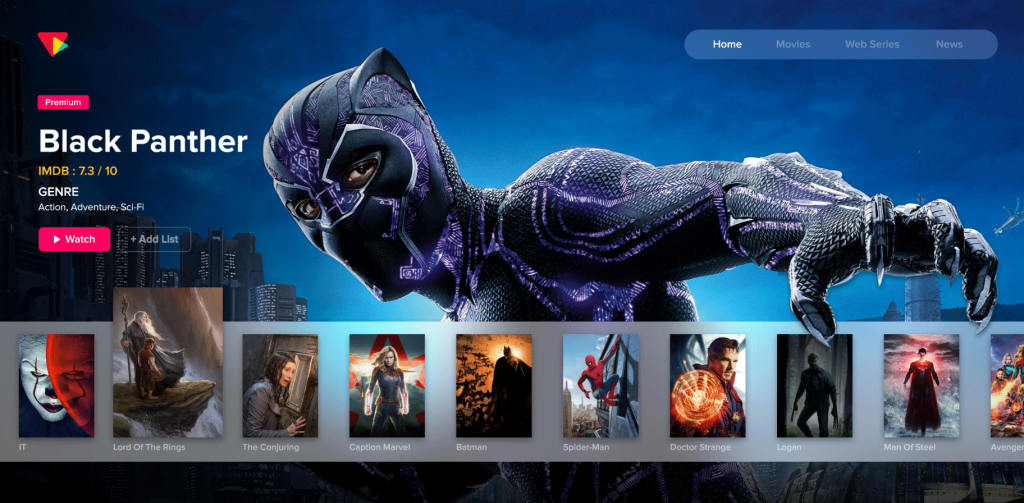The Main Principles Of Apollo Group Tv
Wiki Article
The Basic Principles Of Apollo Group Tv
Table of ContentsSome Ideas on Apollo Group Tv You Need To KnowSome Of Apollo Group TvThe Buzz on Apollo Group TvAll about Apollo Group Tv
In this scenario, instead of having three-minute industrial places during a 30-minute tv program, television shows might change to one where a customer will be called for to have a regular monthly subscription, to make sure that they cen view targeted banner ads. This kind of marketing currently occurs online, and the amount of information tv companies gather permits them to do similar.Explain the significant patterns among the broadcasting and wire networks. Popular radio reveals such as police drama Dragnet and western cowboy series Gunsmoke were adapted for tv, and brand-new TV shows were funded by solitary advertisers, just as radio shows had actually been.
Today, the tv market is far much more complicated. Programs are sponsored by several advertisers; programs is managed by major media empires; and the three significant networks no longer control the airwaves however instead share their audiences with numerous wire networks. Several factors account for these fads within the market, including technological developments, government laws, and the development of new networks.

The Best Strategy To Use For Apollo Group Tv
Established in 1969, (PBS) developed out of a record by the Carnegie Compensation on Educational Television, which checked out the role of academic, noncommercial tv on society. Public television was also meant to give universal accessibility to television for customers in country areas or audiences that could not pay for to pay for exclusive television solutions.The duration between 1950 and 1970 is historically acknowledged as the. Apart from a small part of airtime regulated by public television, the three major networks (called the Big 3) controlled the tv industry, collectively making up even more than 95 percent of prime-time viewing. In 1986, Rupert Murdoch, the head of multinational business News Corp, launched the Fox network, testing the supremacy of the Big Three.
Targeting young and minority target markets with shows such as Buffy the Vampire Killer, Moesha, Dawson's Creek, and The Wayans Bros., the new networks intended to attract stations far from their old network associations. Instead than duplicating the success of Fox, UPN and WB had a hard time to make an impact. Unable to bring in lots of associate stations, both new networks reached less homes than their bigger opponents because they were unobtainable in some smaller cities.
This decision led the way for the advancement of cord motion picture networks, adding to the rapid development of cord in the 1980s and 1990s. apollo group tv app. Additional deregulation of cord in the 1984 Cord Communications Plan Act removed limitations on cable television rates, making it possible for drivers to charge what they wanted for cable television services as long as there was efficient competitors to the solution (a criterion that over 90 percent of all wire markets can fulfill)
The smart Trick of Apollo Group Tv That Nobody is Discussing

Having actually created the very first "superstation," Turner increased his realm by establishing 24-hour information network CNN in 1980. At the end of the year, 28 national programs solutions were available, and the cable television change had started. Over the following decade, the sector went through a period of quick growth and appeal, and by 1994 customers can pick from 94 basic and 20 premium cord solutions.
Number 9 - https://yoomark.com/content/httpsapollogrouptvorgen1.16 Increased competition from cable channels has actually caused a steady decline in the networks' target market ratings. During the 1950s, the price of producing a solitary tv show raised as programs came to be longer and manufacturing costs rose. Sponsorship on network television moved from single sponsorship, in which a program was completely sustained and generated by one advertiser, to several sponsorship, in which advertisers acquired 1- or 2-minute areas on the show
Pick one of the Big Four networks and print out its once a week programming timetable. View the network's prime-time programs over the training course of a week, noting the target group for each program.
7 Simple Techniques For Apollo Group Tv

Direct TV, usually referred to as conventional broadcast TV, incorporates cable and satellite tv. It's called "straight" because material complies with a fixed programming schedule, unlike on-demand content which the private customer determines to watch based on their very own choices and schedule. So, when you ask, "What is direct television?", consider it as the classic way of watching TV that has actually been around for decades.
Report this wiki page